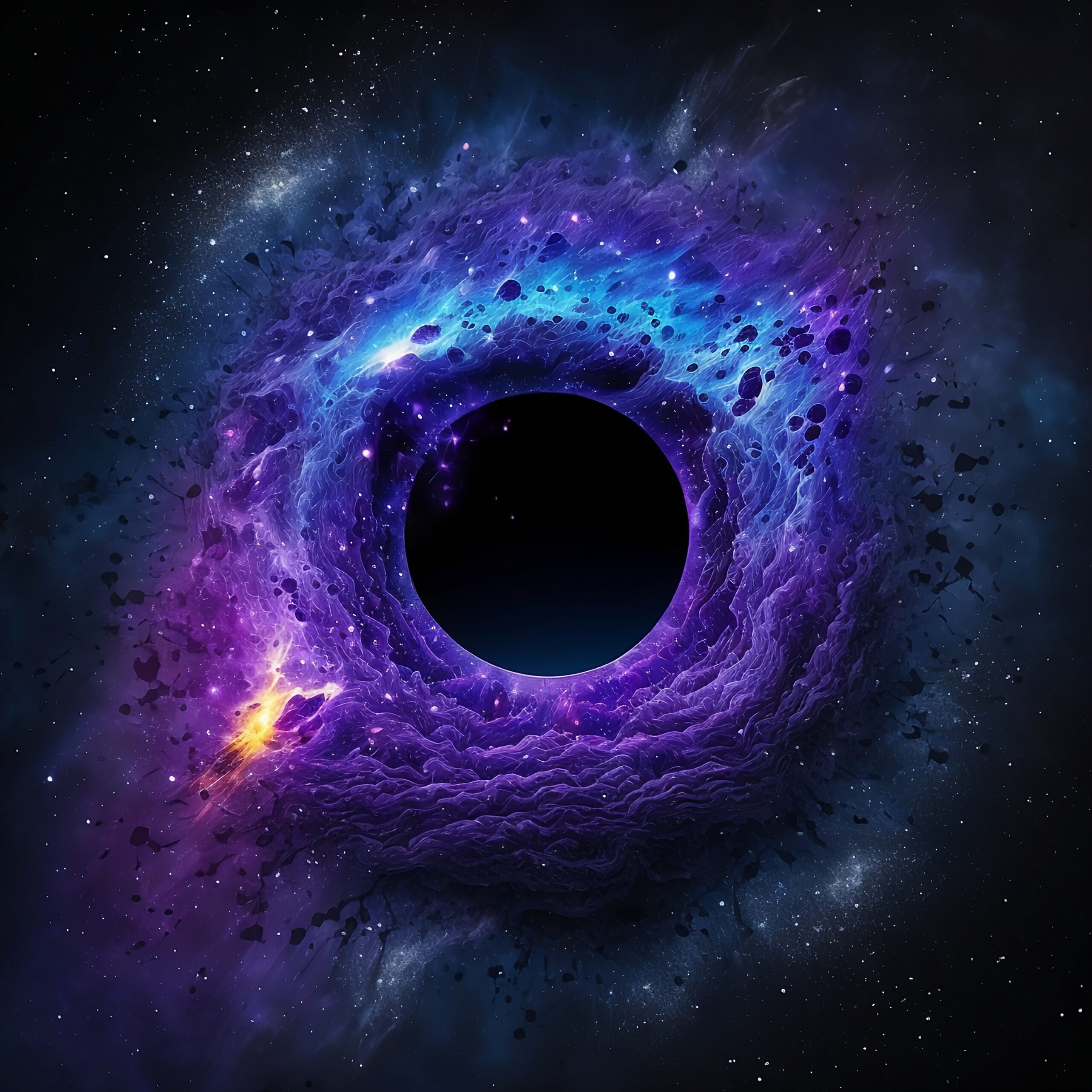Introduction
Wormholes, often called “bridges” or “shortcuts” through spacetime, have fascinated both scientists and the general public for many years. These intriguing structures come from Einstein’s theory of general relativity, which says that spacetime is like a stretchy fabric that can bend, twist, and even link faraway points.
The idea of wormholes makes us rethink our understanding of the universe and raises big questions: Are these strange tunnels real, or are they just an idea in physics? Could they let us travel across huge distances in space or even move through time? This exploration looks into what wormholes really are, separating what science can prove from what belongs to science fiction.
What Are Wormholes?
Wormholes are theoretical tunnels that could link two faraway points in space-time, acting as shortcuts through the vast universe. Think of space-time as a flat sheet of paper. If you wanted to travel from one edge to the other, you’d usually move across its surface. But if you fold the paper so the edges touch, you create a shortcut between the points. A wormhole works on a similar idea, at least in theory.
The concept of wormholes comes from Einstein’s theory of general relativity. In 1935, Albert Einstein and Nathan Rosen suggested something called the Einstein-Rosen bridge— a mathematical model of a tunnel-like structure in space-time. Though this idea is interesting, it is still only a theory, with no experimental proof that wormholes actually exist.
The Physics Behind Wormholes
Wormholes come from Einstein’s equations of general relativity, which explain how large objects bend space-time. These equations suggest that, under certain conditions, space-time could curve into a tunnel-like shape, connecting two separate regions. This possibility is what physicists call a wormhole.
However, not all wormholes are the same. Most solutions to Einstein’s equations describe “non-traversable” wormholes—ones that collapse too quickly for anything to pass through. The idea of wormholes that can be traveled through was made popular by physicists like Kip Thorne. In the 1980s, Thorne and his team looked into the possibility of wormholes that could stay open long enough for travel. Their research showed that for such wormholes to exist, they would need “exotic matter”—a theoretical type of matter with negative energy. This negative energy could help stop the wormhole from collapsing under gravity.
The study of wormholes is still mostly theoretical, but scientists like Thorne have turned the idea from science fiction into serious research. While there’s no proof of exotic matter or traversable wormholes yet, exploring these ideas is helping push the limits of physics and our understanding of the universe.
Could Wormholes Enable Space-Time Travel?
If wormholes exist, they could change how we think about traveling across the universe. Unlike regular travel, which takes a long time because of the vast distances between stars, a wormhole could act as a shortcut, instantly connecting two faraway points in space-time. This idea has fascinated both scientists and science fiction writers, offering a possible solution to the challenges of traveling between stars.
Space Travel Through Wormholes
Wormholes could let us travel great distances in space almost instantly. For example, a journey that would take thousands of years with regular spacecraft might be completed in an instant through a wormhole. However, this idea depends on the wormhole staying open and stable, which presents major scientific challenges.
Time Travel Possibilities
Wormholes could also make time travel possible. If one end of a wormhole were to move at nearly the speed of light or be placed in a strong gravitational field, time could move differently at each end, as predicted by Einstein’s theory of relativity. This might allow someone to travel backward or forward in time. But this raises tricky problems, like the “grandfather paradox,” where changing the past could create contradictions, such as preventing your own existence.
Limitations and Challenges
Instability: Most wormhole models suggest that they would be unstable and collapse quickly, making travel impossible.
Energy Requirements: Keeping a wormhole open would likely take enormous energy, far beyond what we can currently manage.
Exotic Matter: Theories suggest that wormholes need exotic matter with negative energy to stay open. This kind of matter has never been observed or created.
In conclusion, while wormholes present exciting space and time travel ideas, they remain theoretical. Overcoming their challenges would require breakthroughs in our understanding of energy, matter, and the laws of the universe.
Challenges and Current Research
The idea of wormholes is one of the most exciting concepts in theoretical physics, but it comes with many challenges. From understanding their basic principles to the practical difficulties in detecting or creating them, wormholes remain largely speculative and unproven.
Theoretical Challenges
Instability: Wormholes are believed to be unstable in most models and would collapse almost immediately without exotic matter—a hypothetical substance with negative energy.
Exotic Matter Requirements: While negative energy appears in quantum field theory (for example, in the Casimir effect), using it to support a large-scale wormhole is far beyond our current technology.
Causality Issues: Wormholes could potentially allow time travel, which raises paradoxes like the grandfather paradox, challenging our understanding of cause and effect in the universe.
Experimental Challenges
Detection: If wormholes exist, they would be extremely difficult to detect. Their effects on space-time would likely be small and could easily be mistaken for other phenomena, like black holes.
Technological Limitations: The energy needed to manipulate space-time or create a wormhole is so high that it exceeds the capabilities of any current or foreseeable technology.
Current Research
Quantum Physics and Wormholes: Recent studies in quantum mechanics, like quantum entanglement, suggest that microscopic wormholes might connect entangled particles. This could point to a connection between quantum mechanics and general relativity.
String Theory: In string theory, extra dimensions and the mathematics of branes could provide a framework where wormholes naturally form. These approaches aim to unite gravity and quantum physics, possibly giving us new insights into the nature of space-time.
Simulations: Advanced computer models are being used to simulate wormholes and study their behavior in different conditions, helping scientists understand their stability and properties.
Observational Evidence
Despite decades of theoretical work, there is no direct evidence for wormholes. Astronomers and physicists are searching for subtle clues—like unusual gravitational effects or changes in light paths—that could suggest wormholes exist. However, these ideas are still speculative and unproven.
Conclusion
Wormholes are an intriguing idea that links the realms of theoretical physics and science fiction. While they are based on Einstein’s equations and offer exciting possibilities, like instant space travel and time manipulation, wormholes remain just a theory. Despite progress in fields like quantum physics and string theory, we still have no solid evidence that they exist or any idea how we might use them.
The big question remains: Are wormholes real, and if they are, can humanity ever use them for space or time travel? While the challenges are enormous—requiring exotic matter, huge amounts of energy, and breakthroughs in understanding space-time—our drive to explore the unknown keeps pushing scientific progress. The search for answers, even to questions that seem impossible, is a reflection of humanity’s deep curiosity and determination to understand the universe. Whether wormholes exist or not, the journey of discovery itself shows our relentless pursuit of knowledge.
Share the knowledge with

